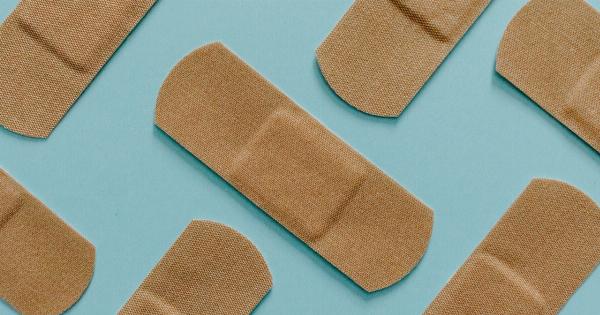Do you often experience waist pain that leaves you uncomfortable and searching for relief? If so, you’re not alone. Waist pain can be caused by a variety of factors including poor posture, muscle strain, or even underlying medical conditions.
In this article, we will explore natural solutions and tips to help alleviate waist pain and improve your overall well-being.
1. Maintain Proper Posture
One of the primary causes of waist pain is poor posture. Slouching or sitting for long periods can strain the muscles in your lower back, leading to pain and discomfort. The first step in finding relief is to maintain proper posture.
Ensure that your shoulders are aligned with your hips and keep your back straight while sitting or standing. Investing in an ergonomic chair or using pillows to support your lower back can also help.
2. Exercise Regularly
Engaging in regular exercise is crucial for waist pain relief. Strengthening the muscles in your abdomen, back, and hips can provide support to your waist and alleviate pain.
Incorporate exercises that focus on core strength, such as planks, bridges, and bird dogs. Additionally, activities like swimming, yoga, and Pilates can improve flexibility and reduce the strain on your waist muscles.
3. Use Heat and Cold Therapy
Applying heat and cold therapy can provide immediate relief for waist pain. A hot water bottle or heating pad can help relax the muscles and increase blood flow to the affected area.
Alternatively, using an ice pack or a bag of frozen vegetables wrapped in a towel can reduce inflammation and numb the pain. Experiment with both hot and cold treatments to determine which works best for you.
4. Practice Good Lifting Techniques
If you frequently lift heavy objects, it’s important to practice proper lifting techniques to prevent waist pain. Bend at the knees and use your leg muscles rather than bending from your waist.
Hold the object close to your body and avoid twisting while lifting. Distribute the weight evenly and use tools like dollies or carts whenever possible to minimize strain on your waist.
5. Maintain a Healthy Weight
Excess weight can put additional stress on your waist and contribute to pain. If you are overweight or obese, losing weight can significantly reduce waist pain. Adopt a balanced diet that includes fruits, vegetables, lean proteins, and whole grains.
Consult with a healthcare professional or a registered dietitian for personalized guidance and support in your weight loss journey.
6. Practice Stress Management
Stress and tension can exacerbate waist pain. Incorporate stress management techniques into your daily routine to promote relaxation and reduce pain.
Activities such as meditation, deep breathing exercises, and practicing mindfulness can help calm your mind and relieve muscle tension. Engaging in hobbies, spending time with loved ones, and getting enough sleep are also essential for managing stress levels.
7. Invest in Supportive Mattresses and Pillows
Your sleep environment plays a crucial role in waist pain relief. Investing in a supportive mattress that contours to your body’s natural curves can help alleviate pressure on your waist.
Additionally, using pillows that provide adequate support for your neck and spine can prevent unnecessary strain while sleeping. Experiment with different mattress firmness levels and pillow types to find the most comfortable setup for your needs.
8. Stretch and Practice Yoga
Stretching exercises and yoga poses can help relieve waist pain by increasing flexibility and improving muscle strength. Incorporate gentle stretches into your daily routine, with a focus on the lower back and core muscles.
Yoga poses such as Child’s Pose, Cat-Cow, and Triangle Pose can promote relaxation and reduce tension in the waist area. Consider attending a yoga class or following online tutorials to learn proper techniques.
9. Seek Professional Treatment
If your waist pain persists or worsens despite trying natural remedies, it’s essential to consult with a healthcare professional. They can assess your condition, provide a proper diagnosis, and recommend appropriate treatment options.
Physical therapy, chiropractic care, or acupuncture may be beneficial in relieving waist pain and addressing any underlying issues.
10. Avoid Prolonged Sitting
Sitting for extended periods can contribute to waist pain. If your work requires long hours of sitting, take breaks every hour to stretch and walk around.
Consider investing in a standing desk or using a chair that promotes active sitting, encouraging movement and proper posture. Incorporating regular movement into your day can help prevent muscle stiffness and alleviate waist pain.
Incorporating these natural solutions and tips into your lifestyle can help alleviate waist pain and improve your overall quality of life. Remember, it’s essential to listen to your body and seek professional advice if needed.
With time, patience, and consistency, you can find relief from waist pain and enjoy a healthier, pain-free waist.






























